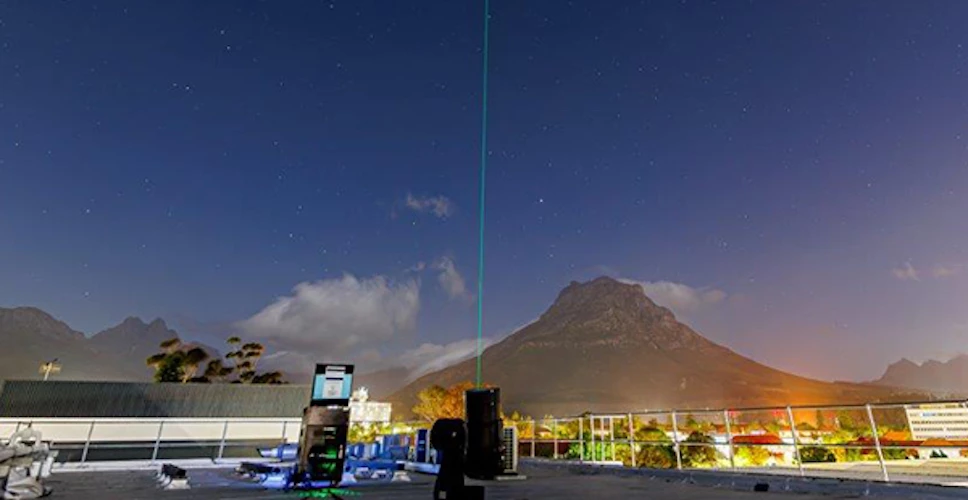The world’s longest quantum communications link has been set up between China and South Africa, spanning a record-breaking 12,900 km (8,015 miles). The connection takes advantage of quantum physics for “unbreakable” encryption.
The link connected ground stations at the University of Science and Technology of China (USTC) in Beijing and Stellenbosch University in South Africa, by way of a quantum microsatellite named Jinan-1.
The information itself is classical – in this case, photos of the Great Wall of China and Stellenbosch – but it’s encrypted through quantum key distribution (QKD). The satellite encodes encryption keys into individual photons, then beams them to each ground station. Once both sides have a key, they can communicate securely through the satellite.
Where does the “quantum” part of the equation come in? The keys are encoded into the quantum states of those photons, and thanks to the spooky world of quantum physics, those states change as soon as anyone tries to observe them. In practice, that means that if some nefarious third-party tries to hack in and read the data mid-transmission, the very act will change the quantum state of the photon and scramble the message.
That not only makes it useless to the hacker, but alerts the intended recipient to the breach. This method should be essentially unhackable, since it’s a property that’s baked into the laws of quantum physics themselves.

In the current test, the satellite was able to transmit more than 250 million quantum photons per second, generating more than a million secure keys during a single pass of the satellite over the ground station. Over 12,900 km separated the two ground stations, setting a new distance record for quantum communication.
Previously, the same team managed to transmit information using QKD between China and Austria, over a distance of 7,600 km (4,722 miles). That was done using an older satellite, called Micius.
Jinan-1, which launched in 2022, is not only more powerful but much smaller, weighing just 23 kg (51 lb) or one-10th of its predecessor. The ground stations have also had a drastic round of weight loss – from 13 tonnes down to just 100 kg (220 lb).
Smaller and more advanced satellites and ground stations could help build a faster, more secure global quantum internet.
A study about the new experiment was published in the journal Nature. The researchers discuss the work in the video below.
Sources: Chinese Academy of Sciences, Stellenbosch University




